+34 644 413 735 24/7 CUSTOMER SERVICE IN STAY
+34 644 413 735 24/7 CUSTOMER SERVICE IN STAY
In Valencia, as in many other places in Spain, the practice of football comes by the sea in the late 19th and early 20th century, from the hand of English sailors who came to Spanish ports. A good example is the Recreation Club (Recreativo de Huelva), founded in 1889 around the mines of Río Tinto, operated by a British company. In their spare time, these national football pioneers played "pachangas" in the open spaces near the Port of Valencia, a show that attracted the natives of the place who began to imitate the sailors. This is how the first teams in Valencia began to be founded, concentrated in the maritime districts of Malvarrosa, Cabanyal and El Grau. Through successive refundations, being first the Maritime Club (having its headquarters in the Camp de la Platgeta, in front of the current Hotel Las Arenas), second the Cabanyal FC and, finally, the Levante FC, was born in 1909 the base of the that later will be the current Levante UD.
That same year, the Gymnastic FC was also founded, which, having ended the Spanish Civil War in 1939, is without players. On the other hand, Levante FC is without a stadium due to the damage caused by the conflict, after continuous bombings provoked by the Italian fascist aviation ("la Pava"). This is how both directives decide to merge into one with the name of Levante UD, adopting this name and the colors (blaugranas) and the stadium of Gymnastic FC (the legendary Campo de Vallejo, located next to the current Station of the Pont de Fusta) . As an anecdote, the Burjassot CF claims against the Levante UD the honor of being the Dean of Valencian football, being founded in 1913 and claiming that Levante UD as we know it today is the result of a merger of two teams and that it occurred in 1939. In any case, the controversy is served, since both claim to be the oldest team in the region.
At the same time, the most successful team in our football, Valencia CF, was born in 1919 by young people from other extinct city teams in the city, including the Club Deportivo Español. He begins to play his games at the Camp de Algirós, not far from the maritime towns, moving in 1923 to the current Mestalla stadium, which began with 14,000 spectators until reaching the capacity of 55,000 spectators today.
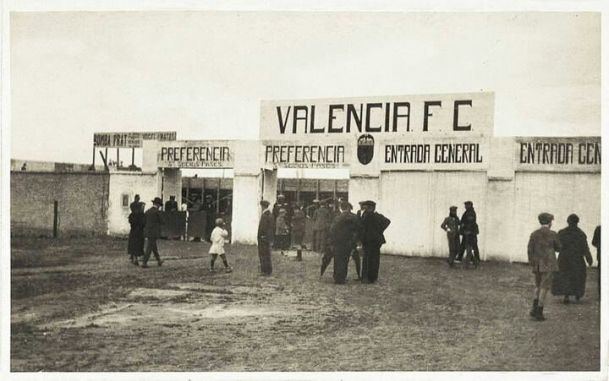
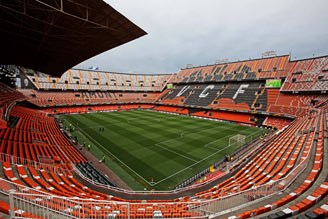
This team experienced a meteoric progression and, after winning several regional championships and spending a few years for the Spanish Second Division, began to play continuously in the First Division in 1931 (league that began to be played in 1928), until it fell in 1985, although he would only stay one year in this category. For Valencia CF have passed great figures who have marked time. In the 40s and 50s, players like Mundo, Gorostiza, Asensi, Wilkes or Puchades stand out; in the 60 the Brazilian Waldo or Guillot; in the 70s, a player from Puçol, Pep Claramunt, and the great Mario Alberto Kempes, nicknamed "" El Matador "; in the 80s and 90s, due to the difficult economic situation and the descent to second caused that they did not stand out great players, in spite of the quality of the Arias, Subirats or Fernando Colomer; Finally, it is at the beginning of the 21st century with figures like Claudio López ("El Piojo"), Mendieta, Pablo Aimar, Vicente Rodríguez (nicknamed "the dagger of Benicalap" and with Levantist past) or David Villa at the end of the decade , when Valencia probably reached its greatest sporting successes, without underestimating other eras of the Mestalla club. In this last golden stage of the team they won leagues, European trophies such as the Uefa Cup and Copas del Rey. It was precisely with the 1999 Cup, with incredible goals by Piojo López and Gaizka Mendieta to Atlético de Madrid at the La Cartuja Stadium in Seville, when they began to glimpse a milestone in the history of this team, play their first final European Cup That year surprised everyone, with an impeccable career eliminating teams like Lazio (with big stars at that time) and FC Barcelona, fell in the final of Paris with another Spanish team, Real Madrid. Not content with that, the following year he repeated the final of the European Cup, falling again defeated against Bayern Munich for penalties, this time in Milan. Despite this, these two finals would elevate Valencia CF to the altars of European and world football.
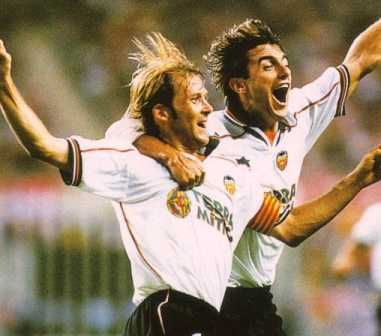
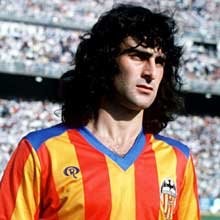
The only title displayed by the neighboring team of the city, the Llevant, is the Copa de la España Libre or the Republic Cup of 1937. This trophy, played in the middle of the Civil War, has brought great controversy over the last few years. , as it has been recognized by the Congress of Deputies but the same has not happened with the Spanish Football Federation, which rejected the request.
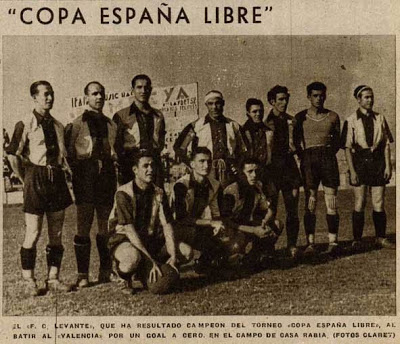
After the war, the Levant could not follow in the footsteps of its neighbor. After spending several years between the second and third division, he managed to ascend to the gold division in 1963 against Deportivo de La Coruña, winning both games. This remained two years until he descended and began another long journey through the silver and bronze divisions of Spanish football. As the only positive note of that stage, it is worth mentioning the construction of the current City of Valencia Stadium, formerly called Nou Estadi, and the signing of Chilean international Carlos Caszely, one of the best players who have passed through the entity. The team continues to wander through the 3rd, 2nd B and 2nd Division, suffering from severe economic crises due to nefarious procedures such as the rocambolesco signing of the Dutch Johann Cruyff or later the hiring of Pedja Mijatovic, players with an unquestionable track record and record but who arrived in the Levant in the last hours of their respective sports careers. With all this, in the year 2004 it goes back up to 1st Division. The same happens another 3 times more, in 2006, 2010 and 2017, but it is between 2011 and 2016 where the golden stage of the club that currently resides in the neighborhood of Orriols was lived. At this time the Uefa Cup was reached by finishing 6th in the 2011/2012 season, falling in the round of 16 against the Russian Rubin Kazan, but passing the previous group and fulminating the Greek Olympiakos for a partial 4- 0 Of these wonderful years we remember the strikers Felipe Caicedo, Arouna Koné or Obafemi Martins, midfielders like José Javier Barkero, Vicente Iborra or Juanlu Gómez, Sergio Ballesteros or Juanfran of defenses and great goalkeepers like the Uruguayan Gustavo Munúa and Keylor Navas, current goalkeeper of the Real Madrid. In any case, today Levante UD fights in the first division to maintain the category, with humility, effort and above all maintaining one of its hallmarks such as the commitment to the Valencian players and the quarry, where the Valencia CF has fished players of the likes of Vicente Rodríguez, José Enrique and Juanfran García, a reason for the pique between both hobbies.
Finally, throughout the article we talked only about the two main teams in the city of Valencia, but we can not finish without honoring the rest of the teams that have made and make history in the Valencian Community such as Villarreal, the Castellón, Elche and Hercules. All of them, except the first one with frequent appearances in European competitions, are currently going through a critical sports and institutional situation, wandering between the 2nd Division B and the Third Division in the case of the Castellón team, but they will undoubtedly return to occupy the place they they deserve. Symptom of this, is that the Castellón CD has about 12,000 members today, thus exceeding in number two teams of first and twelve of the Spanish second division.
Book now your guided tour to the Mestalla football stadium, click on the following link: Guided tour around Mestalla football field
Click on "discover" to see all the tours we have for you
Discover